
Leucopogon plumuliflorus is a species of flowering plant in the heath family Ericaceae and is endemic to the south-west of Western Australia. It is a weakly erect shrub with egg-shaped leaves and spikes of white or pinkish-white, tube-shaped flowers.

Styphelia planifolia is a species of flowering plant in the heath family Ericaceae and is endemic to the south-west of Western Australia. It is a bushy shrub with narrowly oblong or lance-shaped leaves with a small, sharp point on the tip, and white, tube-shaped flowers.
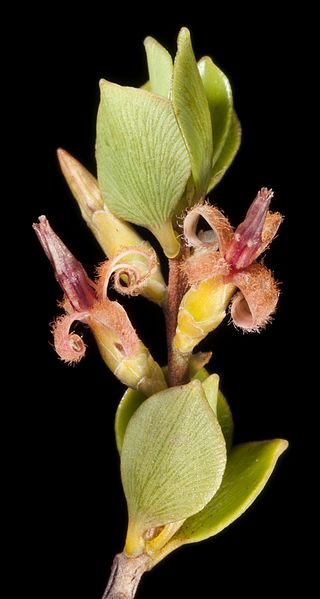
Styphelia coelophylla is a plant in the family Ericaceae endemic to the south west of Western Australia. It is an erect, bushy shrub with egg-shaped to lance-shaped leaves and tube-shaped flowers.

Styphelia blepharolepis is a species of flowering plant in the heath family Ericaceae and is endemic to the south-west of Western Australia. It is an erect shrub with sharply-pointed, oblong to lance-shaped leaves and small flowers in racemes of two to five in leaf axils with small bracts and bracteoles about 1 mm (0.039 in) long. The sepals are about 2 mm (0.079 in) long and the petals are joined at the base forming an urn shape about 4 mm (0.16 in) long with lobes longer than the petal tube.

Leucopogon bracteolaris is a species of flowering plant in the heath family Ericaceae and is endemic to the south-west of Western Australia. It is an erect shrub with egg-shaped to broadly lance-shaped leaves with the narrower end towards the base, about 4 mm (0.16 in) long. The leaves sometimes have a stem-clasping base, and are covered with fine hairs. The flowers are arranged in large, cylindrical spikes on the ends of branches with leaf-like, lance-shaped bracts and bracteoles almost as long as the sepals. The sepals are about 2 mm (0.079 in) long and lance-shaped, the petal tube is slightly longer than the sepals, and the petal lobes are longer than the petal tube.
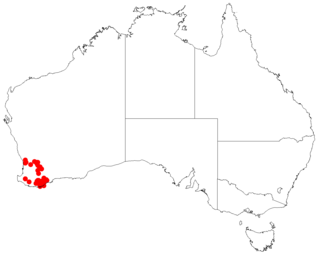
Styphelia cymbiformis is a flowering plant in the family Ericaceae and is endemic to the south-west of Western Australia. It is a bushy or wiry shrub that typically grows to a height of 30–50 cm (12–20 in) and has more or less glabrous branches. Its leaves are erect, linear to lance-shaped and sharply-pointed, mostly 2–4 mm (0.079–0.157 in) long. The flowers are arranged in short spikes, sometimes of only two or three flowers, with lance-shaped, leaf-like bracts, and bracteoles half as long as the sepals at the base of the spikes. The sepals are 2.5–3.0 mm (0.098–0.118 in) long and the petals slightly longer than the sepals, the lobes shorter than the petal tube.
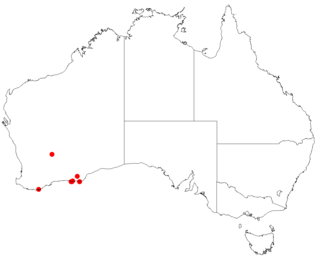
Styphelia multiflora is a species of flowering plant in the family Ericaceae and is endemic to the southwest of Western Australia. It is a rigid shrub with crowded, sharply-pointed, linear to lance-shaped leaves, and white, tube-shaped flowers usually in groups in leaf axils.
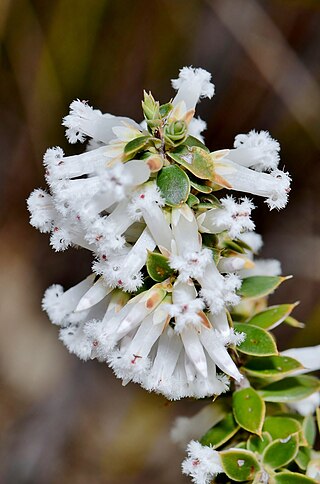
Styphelia erubescens is a species of flowering plant in the heath family Ericaceae and is endemic to the south-west of Western Australia. It is an erect shrub with variably-shaped leaves with a small, sharp point on the tip, and white, pink or red, tube-shaped flowers.
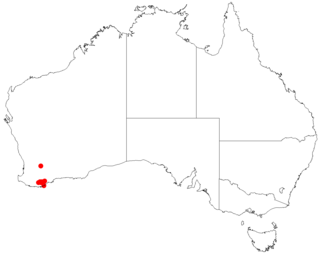
Leucopogon pogonocalyx is a species of flowering plant in the heath family Ericaceae and is endemic to a restricted part of the south-west of Western Australia. It is an erect shrub with wand-like branches. Its leaves are erect, egg-shaped, 4–6 mm (0.16–0.24 in) long with a rigid, sharply-pointed tip on the end. The flowers are borne in leaf axils in pairs or threes with bracts and broad bracteoles about one-third as long as the sepals. The sepals are about 2 mm (0.079 in) long with bearded edges, and the petals are about 4 mm (0.16 in) long, the petal lobes as long as the petal tube and densely bearded.

Leucopogon strictus is a species of flowering plant in the heath family Ericaceae and is endemic to the southwest of Western Australia. It is an erect, rigid, more or less glabrous shrub with oblong to lance-shaped leaves and white, tube-shaped flower arranged singly or in pairs in leaf axils.
Styphelia compacta is a species of flowering plant in the heath family Ericaceae and is endemic to the south-west of Western Australia. It is a widely spreading or prostrate, much-branched shrub with egg-shaped leaves or lance-shaped leaves with the narrower end towards the base, and red flowers arranged in leaf axils.
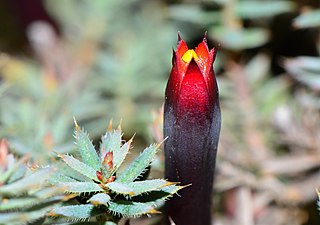
Styphelia discolor is a species of flowering plant in the heath family Ericaceae and is endemic to the south-west of Western Australia. It is a shrub, usually with prostrate stems and spreading, tapering linear leaves and almost sessile red flowers.
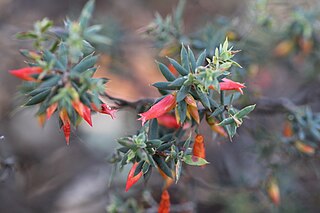
Styphelia epacridis is a flowering plant in the family Ericaceae and is endemic to the south-west of Western Australia. It is a straggling shrub with lance-shaped or linear leaves with a sharp point on the tip, and red, tube-shaped flowers arranged singly in leaf axils.
Styphelia exserta is a species of flowering plant in the heath family Ericaceae and is endemic to the south-west of Western Australia. It is an erect shrub with broadly egg-shaped leaves, and white, tube-shaped flowers.

Styphelia hainesii is a species of flowering plant in the heath family Ericaceae and is endemic to the south coast of Western Australia. It is a bushy shrub with egg-shaped leaves, the narrower end towards the base, and red, tube-shaped flowers arranged singly in leaf axils.
Styphelia inopinata is a species of flowering plant in the heath family Ericaceae and is endemic to the west of Western Australia. It is a robust, spreading shrub with hairy young branchlets and usually erect, narrowly elliptic, sharply-pointed leaves and reddish pink, very narrowly bell-shaped flowers, usually arranged singly in leaf axils.

Styphelia lissanthoides is a species of flowering plant in the heath family Ericaceae and is endemic to the south of Western Australia. It is an erect, bushy shrub with egg-shaped to lance-shaped leaves with the narrower end towards the base, and white, tube-shaped flowers arranged singly or in pairs in leaf axils.
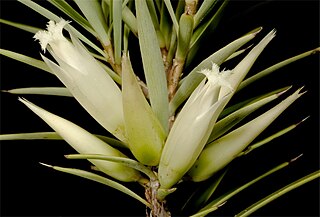
Styphelia macrocalyx, commonly known as Swan berry, is a species of flowering plant in the heath family Ericaceae and is endemic to the south west of Western Australia. It is a shrub with sharply pointed, narrowly lance-shaped leaves and white, tube-shaped flowers with tufts of hairs on the inside.
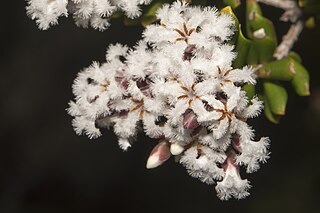
Styphelia melaleucoides is a species of flowering plant in the heath family Ericaceae and is endemic to the south west of Western Australia. It is an upright, spreading shrub with egg-shaped to almost round leaves and white, tube-shaped flowers bearded inside.

Styphelia microcalyx, commonly known as native cranberry, is a species of flowering plant in the heath family Ericaceae and is endemic to the south west of Western Australia. It is a much-branched, erect or diffuse shrub with linear or narrowly oblong leaves and red, tube-shaped flowers that are bearded inside.

















